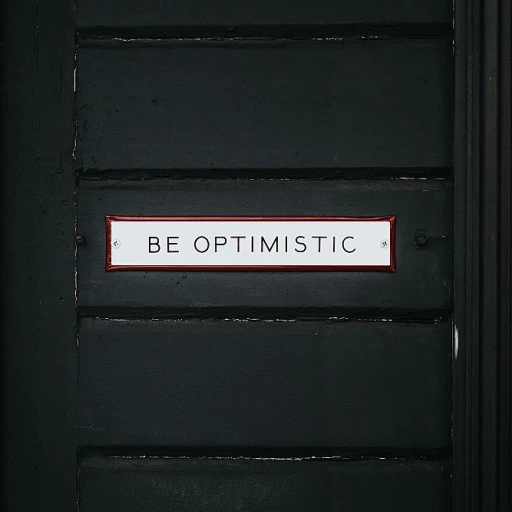Understanding Predictive Analytics in HR
Grasping the Power of Predictive Analytics in HR
Predictive analytics in human resources is a shining beacon of innovation in helping businesses make smarter, more data-driven decisions. Forget the age-old methods of hiring and managing talent. These data analytics tools provide insights into workforce trends and employee engagement, allowing businesses to predict outcomes and take preemptive actions. With the use of human resources data, professionals can peek into the future employee landscape. Predictive models leverage historical data to foresee trends, enabling impactful decision-making. Imagine reducing employee turnover because you knew just what was coming. Decisions made based on analytics bring a sense of stability and confidence in human resource management.Real-World Applications and Expert Insights
Consider this: a company grappling with high employee turnover deploys predictive analytics, finding a link between high turnover rates and lack of career advancement opportunities. This revelation enables management to revise talent management strategies, focusing on employee retention through enhanced growth plans. While the benefits of predictive analytics abound, it's folks like you who’ll carve out its true potential in your business strategies. The expertise required in predictive and prescriptive analytics is not unattainable – it’s what helps businesses thrive amid competition. For a deeper understanding, exploring the benefits of a master's in HR analytics can be helpful. The education arms HR professionals with the skills to better harness analytics, offering an edge in managing resources and nurturing employee performance. Experience has shown that businesses applying predictive analytics can shift from reactive to proactive management, achieving better engagement and performance metrics. By turning data into actionable insights, human resources can add value that resonates throughout the organization.Improving Recruitment Processes
Streamlining Job Hiring with Analytics
In today's HR world, it's more important than ever to find the right people at the right time. With predictive analytics taking center stage, professionals can now tap into data patterns to make informed recruiting decisions. Historical data, when analyzed, can reveal what makes a candidate successful and predict future performance. By doing so, HR teams can focus their efforts on potential employees who match the company culture and job requirements. Imagine an HR department that uses predictive data models to identify candidates who are more likely to stay with the company long-term. This not only reduces employee turnover but also strengthens team morale and engagement.Smart Moves for Reduced Turnover
Speaking of employee turnover, no one likes introducing themselves at farewell parties too often. Predictive analytics offers a way to gauge future turnover risks by analyzing various factors like job satisfaction, engagement levels, and even external industry trends. This is where data driven insights can turn the tide for HR professionals. When companies have access to such valuable insights, they can create proactive strategies for retention. From performance management to crafting tailored engagement plans, the goal is to keep valuable employees content and committed. It's not just about using data; it's about using it to make informed decisions that resonate with people, making them feel valued and heard.Boosting Productivity Through Insightful Hiring
Another fantastic benefit of predictive analytics is the impact on workforce performance. Identifying employees who exhibit traits of high achievers can lead to enhancing overall employee performance. By selecting candidates based on behavioral and performance predictive models, HR teams can build stronger, more efficient teams that elevate business outcomes. This modern twist on talent management not only helps in finding valuable employees but also boosts productivity, ensuring that teams are equipped to meet the organization's goals. For those considering expanding their HR expertise, a Master’s in HR Analytics could be the next step in understanding these data driven techniques. Embrace this future with open arms and watch your team's success story unfold.Boosting Employee Retention
Strengthening Workforce with Analytics
Gauging potential and retaining talent has never been a small deal for human resources professionals. Predictive analytics can be a valuable ally in this game, giving companies key insights into employee engagement and retention. It's not just about finding the right people, but also keeping them around. Firstly, we need to dive deep into employee turnover, it's a term that keeps HR folks on their toes. It's about understanding why employees leave, what makes them tick, and what keeps them loyal. By using historical data, workforce analysts can spot trends related to employee turnover. Besides, predictive models come into play here. These models help in signaling those at risk of leaving, which in turn aids management to preemptively address the problem. A simple data analytics tool can provide insights into the predictive patterns of turnover, allowing professionals to make informed decisions to enhance employee retention. Real-life applications are simple. Imagine using analytics for spotting high performers who might not seem fully engaged. This way, HR can intervene effectively, keeping those key players in the business. You can read more about how analytics helps in understanding employees by checking the HR Analytics Summit. Moreover, prescriptive analytics transforms this data into actionable strategies. It helps in creating a work environment that promotes performance management and is focused on improving employee engagement. Through data-driven decision making, professionals can foster an environment that nurtures and satisfies employees. Lastly, blending predictive analytics with human intuition creates a robust strategy that maximizes employee satisfaction and efficiency. Human resources can thus leap forward with strategies that are intelligent yet personal.Optimizing Workforce Planning
Making Workforce Planning More Efficient
Planning your workforce can feel like juggling too many balls at once, but predictive analytics offers a solution to this common problem. By tapping into historical data and blending it with prescriptive analytics, HR professionals can make well-informed decisions about future staffing needs. This approach helps businesses maintain a balanced workforce and promotes seamless operations even during busy seasons. Predictive models, when applied correctly, can estimate future employee turnover rates, offering the chance to mitigate attrition before it hits hard. For example, consider a retail company predicting increased customer demand during the holiday season. Data-driven insights can direct the organization to hire temporary staff proactively, preventing any shortfall in service quality.Guiding Effective Decision Making
How do you make decisions in your HR department? Gone are the days of gut feelings ruling all. Predictive analytics steps in as the trusty vault of insights, guiding managers to make better choices grounded in data. Organizations can now forecast staffing requirements and effectively allocate team resources, promoting holistic employee performance management. Let’s consider healthcare. Hospitals often encounter unpredictable patient inflow. With predictive analytics, they can manage scheduling, ensuring the right number of medical professionals are available when demand spikes.Enhancing Employee Engagement
Engagement levels say a lot about employee satisfaction and productivity. Here, predictive analytics shines by analyzing data to uncover patterns that might affect employee morale. Monitoring these data trends helps management intervene timely, fostering a healthier workplace culture. For instance, tech firms often utilize analytics to evaluate the engagement quotient of their teams. By examining engagement data, they might detect an unusual trend of decreased satisfaction ahead of annual performance reviews. Timely addressing of such insights can lead to reduced turnover and higher retention rates. Taking a data-driven, analytically insightful approach to workforce planning not only boosts operational efficiency but also sets the stage for strategic HR growth. This makes predictive analytics not just a tool, but an indispensable ally in human resources.Enhancing Employee Performance
It's one thing to hire the right people, but an entirely different game to bring out the best in them. How do you really understand what's driving employee performance? That's where employee analytics steps in. This isn't about just ticking boxes; it's about taking meaningful action with the right data.
Diving into the Data Pool
Think of employee performance as a treasure map, with data being the guide to uncover hidden insights. To get the most out of your workforce, use predictive analytics to crunch numbers and read patterns. Managers can look at historical data to spot trends and identify what’s impacting performance—be it work-life balance, work environment, or personal goals.
Data-driven insights can help shed light on various aspects of an employee's journey within the company. By utilizing predictive models, managers can spot potential high performers and ensure they receive the support and opportunities they need to shine. Imagine identifying who might become the next leader in your organization, even before they've realized their potential.
Personal Stories from the Field
Here's an example of predictive analytics in action: a mid-sized tech company noticed a spike in employee turnover and decided to dig deeper using descriptive analytics. By analyzing engagement survey results alongside performance data, they found that employees felt their skills were underutilized. The company used this insight to tailor training programs and align growth opportunities with employee strengths. Not only did this boost engagement, but it also cut turnover rates by 20% over a year.
These personalized strategies guide the way to optimize employee potential, so you're not just building a workforce but a team that's ready to tackle the future together.
Decision-making Made Easier
When you incorporate analytics into your performance management strategies, you take decision-making from a guessing game to an informed process. You don't need to have a crystal ball—all you need is a little prescriptive analytics. With clear insights, HR professionals can make data-driven decisions that resonate with their workforce, improving not just productivity but satisfaction too.
By transforming data into actionable strategies, companies are not just reacting to employee needs but anticipating them, creating a culture that's inherently supportive and forward-thinking.
Overcoming Challenges in HR Analytics
Overcoming Barriers with Predictive Models
Human resources professionals often face challenges in implementing predictive analytics into their core functions. There's a fear of the unknown when it comes to data driven strategies and predictive models. The bottom line is, diving into the world of predictive analytics isn't as scary as it seems. It's like learning to ride a bike—wobbly at first, but the benefits far outweigh the initial struggle.
The first challenge is understanding how to integrate analytics into the existing HR strategy. Many professionals are still stuck in the rut of traditional data analytics like descriptive techniques, which focus on past and present data without offering predictive insights into future trends. By shifting towards predictive models, HR can make informed decisions about employee engagement, management tactics, and even talent acquisition strategies.
The technical hurdle can also be intimidating. Terms like machine learning and prescriptive analytics can sound daunting, but with the advancements in technology, these are becoming more accessible. Many HR departments are already seeing the benefit of software tools which incorporate analytics, easing the challenge for those who may not be tech-savvy. The real task is to blend this tech into your HR practices without disrupting the work environment.
The Human Element in Data
Incorporating predictive analytics in human resources isn't just about numbers and tech; it's also about people. HR professionals need to understand the importance of employee buy-in. Employees may fear being reduced to mere data points, but when employees see how data can improve their performance management and enhance their career paths, the tension eases.
Employee retention tends to be a major concern, and predictive analytics can give you data estimates on potential turnover rates and the reasons behind them. It's empowering to have insights that allow you to take proactive measures rather than reactive ones, helping manage not just the employee turnover, but also boosting morale and engagement.
Adoption and Ongoing Learning
Like any new system, implementing analytics in HR requires commitment from management down to the individual employees. Continuous learning and adaptation shouldn’t be neglected, as analytics techniques evolve rapidly. It might be worthwhile considering further education opportunities for your team to stay ahead. The blog on HR analytics can offer guidance for those looking to deepen their knowledge.
In wrapping this up, remember that the power of analytics doesn't lie in the tech itself, but in the humans who use it. Understanding how it can enhance employee performance and foster a healthy, productive workforce makes the learning curve worthwhile.






